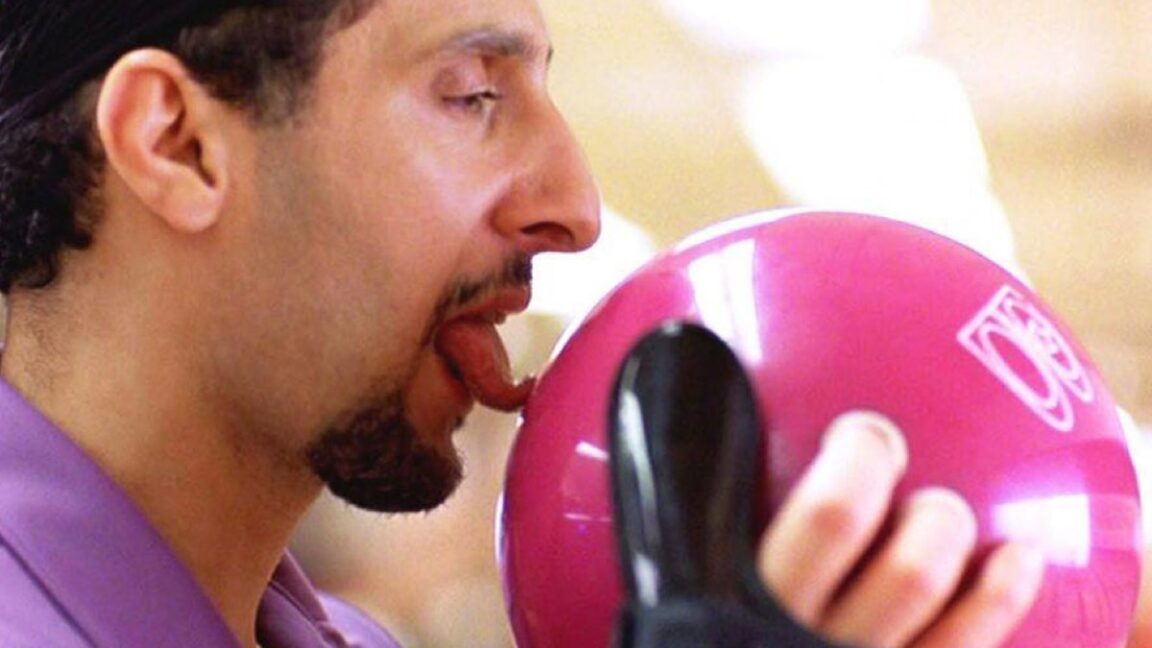New model uses 6 differential equations relating to a rotating rigid body for best strike conditions.
More than 45 million people in the US are fans of bowling, with national competitions awarding millions of dollars. Bowlers usually rely on instinct and experience, earned through lots and lots of practice, to boost their strike percentage. A team of physicists has come up with a mathematical model to better predict ball trajectories, outlined in a new paper published in the journal AIP Advances. The resulting equations take into account such factors as the composition and resulting pattern of the oil used on bowling lanes, as well as the inevitable asymmetries of bowling balls and player variability.
The authors already had a strong interest in bowling. Three are regular bowlers and quite skilled at the sport; a fourth, Curtis Hooper of Longborough University in the UK, is a coach for Team England at the European Youth Championships. Hooper has been studying the physics of bowling for several years, including an analysis of the 2017 Weber Cup, as well as papers devising mathematical models for the application of lane conditioners and oil patterns in bowling.
The calculations involved in such research are very complicated because there are so many variables that can affect a ball's trajectory after being thrown. Case in point: the thin layer of oil that is applied to bowling lanes, which Hooper found can vary widely in volume and shape among different venues, plus the lack of uniformity in applying the layer, which creates an uneven friction surface.
Per the authors, most research to date has relied on statistically analyzing empirical data, such as a 2018 report by the US Bowling Congress that looked at data generated by 37 bowlers. (Hooper relied on ball-tracking data for his 2017 Weber Cup analysis.) A 2009 analysis showed that the optimal location for the ball to strike the headpin is about 6 centimeters off-center, while the optimal entry angle for the ball to hit is about 6 degrees. However, such an approach struggles to account for the inevitable player variability. No bowler hits their target 100 percent of the time, and per Hooper et al., while the best professionals can come within 0.1 degrees from the optimal launch angle, this slight variation can nonetheless result in a difference of several centimeters down-lane.
Simulation for success
With this latest paper, Hooper and his co-authors have built on that prior work to create a simulation for successful target strategies bowlers might use to increase their strike percentage. Their resulting model takes into account starting position, ball speed, axis rotation, axis tilt, angular velocity, and yes, the effects of that pesky oil layer on the lanes.

"Predicting the motion of the pins (and thus strike chance) after the initial impact between the ball and head pin accurately is a very difficult problem due to many features, such as the shape of the pin, differences in the properties of the pins (center of gravity, base radius, mass, etc.), and differences in the position of the pins when each full set of pins is initially set," Hooper told Ars. "Whilst this would be an interesting problem to study, we decided in this work to couple the results of our model with data collected from a laboratory test that investigated the effect of entry angle and impact position on strike percentage."
The resulting model uses a set of six differential equations relating to a rotating rigid body to show the best conditions for a strike. For instance, there are two phases of the ball's motion: a sliding phase, where friction is low, which accounts for most of the ball's travel; and a pure rolling phase, where no more torque is applied and the ball travels in a straight line toward the pins. The model can take all the relevant inputs that affect a bowling ball's motion and accurately calculate the trajectory to determine the ideal path for a strike.
As for player variability, it turns out there is an area that has the highest chance of a strike, and this is where the oil pattern can have an impact, thanks to varying friction between the center of the lane and the gutter. "If the bowler misses slightly to the right, the higher friction near the gutter would accelerate the ball to the left," the authors wrote. "Similarly, the lower friction in the center means that a shot that misses slightly to the left will not hook early." Experienced bowlers may already know this, but the model should be helpful to those relatively new to the game seeking to make adjustments to improve their strike percentage.
Hooper et al. hope to further improve the accuracy of their model to take into account such factors as uneven bowling lanes. "Talking to the elite level bowlers about this work will help us to understand what shape of ball paths they are looking for when they compete, and if what our model predicts is close to where they would bowl on a given oil pattern in a competitive setting," said Hooper. "The model would also be helpful to illustrate to bowlers (of all levels) what happens when they miss their intended shot, not only in terms of direction, but by an increase/decrease in axis rotation or speed."
AIP Advances, 2025. DOI: 10.1063/5.0247761 (About DOIs).
Hope you enjoyed this news post.
Thank you for appreciating my time and effort posting news every day for many years.
News posts... 2023: 5,800+ | 2024: 5,700+ | 2025 (till end of March): 1,357
RIP Matrix | Farewell my friend ![]()
- Mutton
-

 1
1



3175x175(CURRENT).thumb.jpg.b05acc060982b36f5891ba728e6d953c.jpg)
Recommended Comments
There are no comments to display.
Join the conversation
You can post now and register later. If you have an account, sign in now to post with your account.
Note: Your post will require moderator approval before it will be visible.